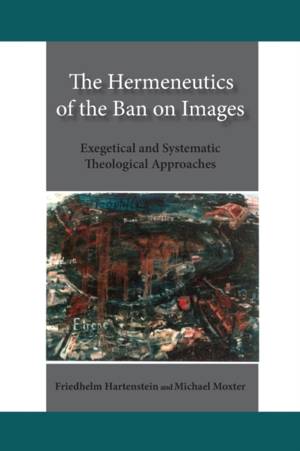
- Afhalen na 1 uur in een winkel met voorraad
- Gratis thuislevering in België vanaf € 30
- Ruim aanbod met 7 miljoen producten
- Afhalen na 1 uur in een winkel met voorraad
- Gratis thuislevering in België vanaf € 30
- Ruim aanbod met 7 miljoen producten
Zoeken
The Hermeneutics of the Ban on Images
Exegetical and Systematic Theological Approaches
Friedhelm Hartenstein, Michael Moxter
Paperback | Engels
€ 73,95
+ 147 punten
Omschrijving
In the history of Judaism and Christianity the biblical ban against images has been a decisive factor in shaping collective identity around opposition to the veneration of images. The biblical ban inspired the iconoclastic controversy in Byzantium as well as iconoclasm during the Protestant Reformation. Even in the present, biblical texts prohibiting images may be easily misunderstood in ways that can lead to religious conflicts and even violence. At the same time, the humanities are experiencing an "iconic turn," a marked attention to the role of images. Recognizing both the potential for misunderstanding the biblical texts and the promise of a more nuanced appreciation of the role of images in human experience, this book constructs a framework for understanding the place of images, and their prohibition, within the biblical text and Christian religious practice. In the form of a dialogue between an Old Testament scholar and a Protestant systematic theologian, the volume explores potential lines of convergence between the rationale behind rejecting visual representations of God and that behind regarding the icon of Christ as a representation of the invisible God. Consideration of Old Testament texts in their cultural context clarifies key distinctions underlying the prohibition of material representations of God, while explaining the central importance of the biblical texts for creating "mental iconography" of God. +
Specificaties
Betrokkenen
- Auteur(s):
- Uitgeverij:
Inhoud
- Aantal bladzijden:
- 232
- Taal:
- Engels
Eigenschappen
- Productcode (EAN):
- 9780809154548
- Verschijningsdatum:
- 5/05/2020
- Uitvoering:
- Paperback
- Formaat:
- Trade paperback (VS)
- Afmetingen:
- 152 mm x 229 mm
- Gewicht:
- 399 g

Alleen bij Standaard Boekhandel
+ 147 punten op je klantenkaart van Standaard Boekhandel
Beoordelingen
We publiceren alleen reviews die voldoen aan de voorwaarden voor reviews. Bekijk onze voorwaarden voor reviews.











